Assorted political bigwigs turned out for the VIP opening of Art Taipei on Thursday. With projected foot traffic of 100,000-plus and a 30 percent increase in exhibitor participation, the event — which runs until Monday at the Taipei World Trade Center — was another opportunity to showcase Taiwan’s COVID-19 success.
But a consciously apolitical tone underscored one of the more prominent exhibitions at this 28th instalment of the annual art fair, as Doctors Without Borders (MSF) sought, in the words of its Taiwan foundation director Ludivine Houdet, to “tell stories of human beings” that are based on “independence, impartiality and neutrality.”
Marking the humanitarian organization’s 50th anniversary, En Route, which is hosted in collaboration with Magnum Photos, comprises 43 images from five global crisis points that are the focus of MSF’s medical assistance efforts. The works of five photographers are featured, with a further two to be added to the organization’s Web site at a later date.

Photo courtesy of Magnum Photos
The intended audience is very much the Taiwanese public, Houdet stresses, with minimal official involvement. “We’re always trying to engage with government and understand where we can work [together],” says Houdet. “But we don’t follow their direction or have a specific relationship with Taiwan’s government or MOHW [Ministry of Health and Welfare], regarding where or how to deliver humanitarian aid.”
Instead, Houdet emphasizes, the goal is “working with the civil population, getting support and raising awareness.”
Because of the emphasis on eschewing official development assistance channels, Houdet admits that a “big machinery of communication” is required to reach out to the public. With seven million donors worldwide, MSF has proved adept at spreading the word.
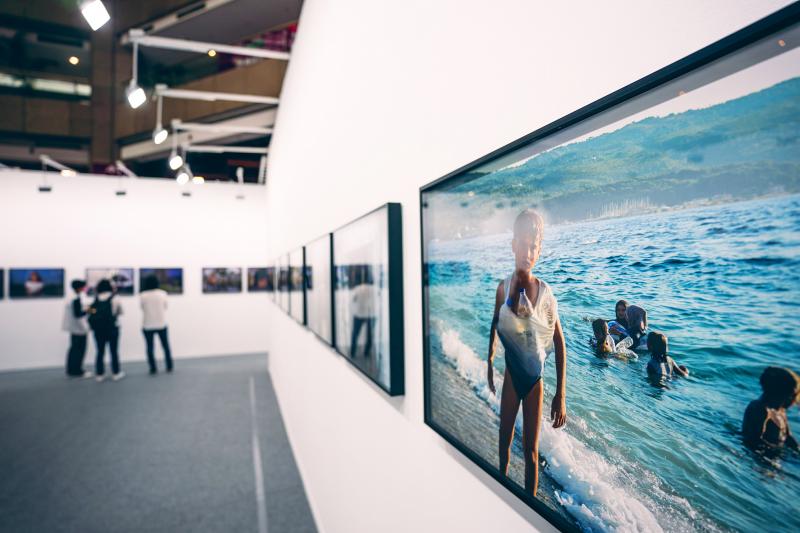
Photo courtesy of Doctors Without Borders
Following seven years as MSF’s director of fundraising in South Africa, Houdet was tapped to head the fledgling Taiwan office last year.
“I was so much in love with Africa that I didn’t know if I could leave,” she says. “But then I started to read the history of Taiwan and became super interested. It was actually a fantastic challenge to set up a new MSF in a place where we are not very well known.”
And while the environment and understanding of humanitarian assistance may be less developed here in Taiwan, Houdet has been encouraged by what she has seen, particularly during the organization’s publicity drive at university campuses.
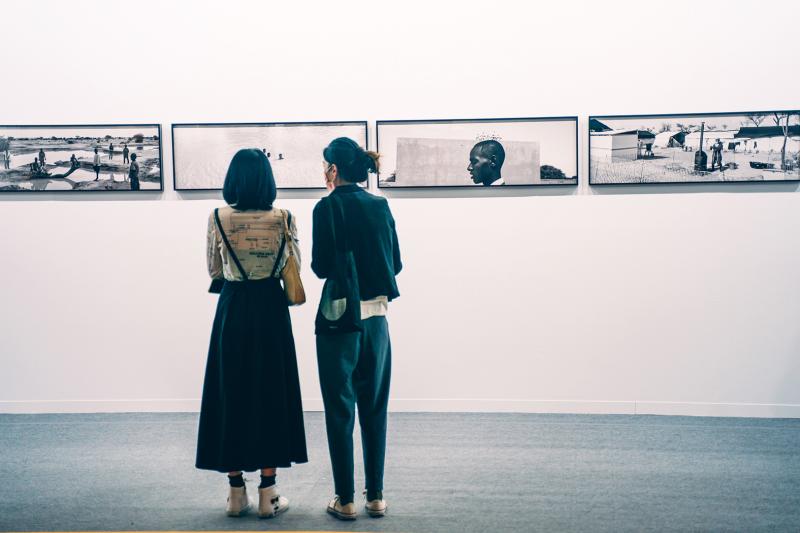
Photo courtesy of Doctors Without Borders
“South African students have very different questions, because there, HIV is around you, TB is around you, so it’s a different dynamic,” she says. “But I think Taiwanese students are eager to find out more about what is happening in other countries.”
EAGERNESS TO LEARN
Recalling an event at Epoch School (part of the MIT-affiliated Epoch Foundation) in August, Houdet is impressed by the insight into complex issues that students demonstrated.
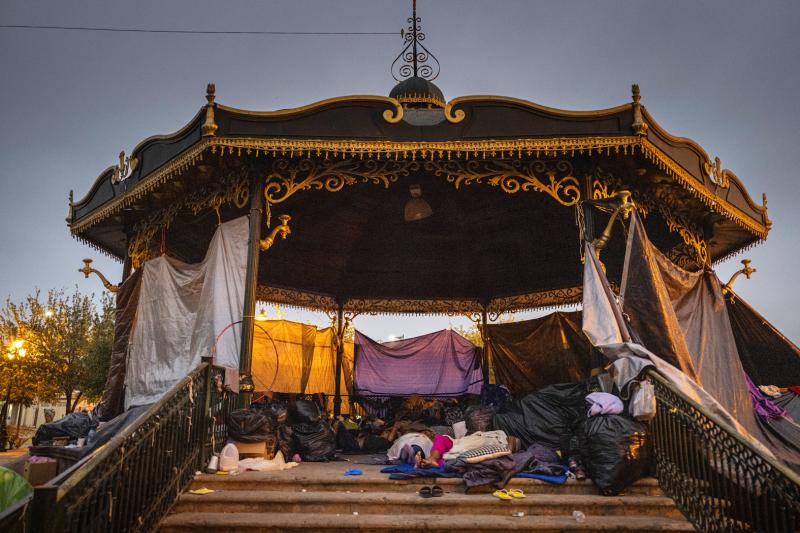
Photo courtesy of Magnum Photos
“There was a fascinating question about how we can be neutral in conflict areas and what it means to be a woman working for a humanitarian organization when we do sexual, gender-based programs,” she says. “It was a very specific question, so I believe there is a big interest from the youth to understand more and to dare to ask more.”
The need to stay topical is reflected in the themes of the photos: migration and displacement, violence, disease, and access to water. But in several cases, the specific circumstances and incidents depicted will be familiar to anyone keeping abreast of international humanitarian crises.
A series from last year by Albanian-born photographer Enri Canaj captures scenes from the Moria camp on the Greek island of Lesbos. This was Europe’s biggest refugee camp at the time, until a pair of devastating fires left 13,000 refugees without shelter. In addition to shots of the second blaze, Canaj depicts the trauma experienced by different individuals.
MENTAL HEALTH ISSUES
After 11 months in the camp with her husband and three children, 29-year-old Afghan refugee Omolbanin has reached breaking point and has been prescribed medication to help her cope. Occupying the center of an open doorway, like a huge, misshapen keyhole, the silhouette of her drooped, hijab-wrapped upper torso contrasts with the pale blue sky beyond.
Four years her countrywoman’s senior, Misria also looks out from the tarpaulin of her makeshift abode, this time toward the camera, her gaze impassive. Five-months pregnant, she can no longer take the medication she had been prescribed.
“Because of the conditions, a lot of refugees suffer from mental health issues,” says Wei Jia-yu (魏嘉瑀), an MSF communications officer. “Part of the problem is that it’s difficult to let them know this is an issue. Many don’t think they need medical assistance.”
With immigration a particularly inflammatory topic during the Trump administration, images of Central American migrants in Mexico and Honduras also have a strong resonance. Through his work, Mexican photographer Yael Martinez tells stories of people striving for a better life in the land of opportunity. Journeying hundreds, sometimes thousands of miles on foot and, if lucky, by train, these wayfarers often end up trapped in limbo in Mexican border towns where they are vulnerable to a host of abuses by criminal gangs.
MENACE IN THE MUNDANE
Sexual and gender-based violence (SGBV) are recurring themes in the exhibition, and they inform Newsha Tavakolian’s images of Ituri Province in the Democratic Republic of Congo. In keeping with MSF’s policy of protecting the identity of SGBV victims, only the feet of one young woman are shown alongside those of a mental health nurse who cared for her. The girl’s flip-flops have the letters “VIP” on them; the nurse’s skirt an image and slogan celebrating International Women’s Day.
Even the relative mundanity of a market on the fringes of a refugee camp is imbued with menace, as we learn that women are routinely attacked on the road to such locations.
Likewise, the otherwise innocent boredom of three adolescents loitering in a field acquires a disturbing aspect in view of the revelation that boiling resentment at unemployment and lack of opportunity is behind some of the violence inflicted on women. In Tavakolian’s words, rape becomes “a means through which men exert power and seek revenge from the cruelty of life” and “a woman’s body becomes the site for this act of revenge.”
HOPE AND HUMANITY
To be sure, there is hope in many of the images — a young Syrian boy using scavenged plastic bottles as a buoyancy aid for a tentative first dip in the Aegean; a circle of happy young heads protruding from a muddy stream in Niger; a hand dangled from a bus window, pressed closed to a lover’s lips near Sudan’s border with Ethiopia’s restive Tigray Province.
It’s the kind of powerful storytelling that one would expect of an agency cofounded by Henri Cartier-Bresson — he of the decisive moment — and Robert Kapa, who turned conflict-zone photojournalism into an art form. Dovetailing with MSF’s ethos of treating its patients as autonomous individuals with their own distinct aspirations, the photos compel you to engage with their subjects.
“It’s very easy for us to only present a victim, a problem, someone who doesn’t look like they are really empowered,” says Houdet. “So that’s also a big focus — linking human with human and trying to tell different stories.”
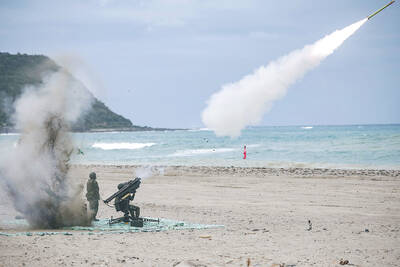
In late October of 1873 the government of Japan decided against sending a military expedition to Korea to force that nation to open trade relations. Across the government supporters of the expedition resigned immediately. The spectacle of revolt by disaffected samurai began to loom over Japanese politics. In January of 1874 disaffected samurai attacked a senior minister in Tokyo. A month later, a group of pro-Korea expedition and anti-foreign elements from Saga prefecture in Kyushu revolted, driven in part by high food prices stemming from poor harvests. Their leader, according to Edward Drea’s classic Japan’s Imperial Army, was a samurai

The following three paragraphs are just some of what the local Chinese-language press is reporting on breathlessly and following every twist and turn with the eagerness of a soap opera fan. For many English-language readers, it probably comes across as incomprehensibly opaque, so bear with me briefly dear reader: To the surprise of many, former pop singer and Democratic Progressive Party (DPP) ex-lawmaker Yu Tien (余天) of the Taiwan Normal Country Promotion Association (TNCPA) at the last minute dropped out of the running for committee chair of the DPP’s New Taipei City chapter, paving the way for DPP legislator Su
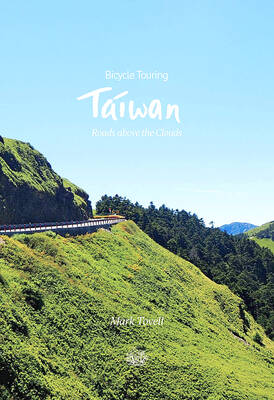
It’s hard to know where to begin with Mark Tovell’s Taiwan: Roads Above the Clouds. Having published a travelogue myself, as well as having contributed to several guidebooks, at first glance Tovell’s book appears to inhabit a middle ground — the kind of hard-to-sell nowheresville publishers detest. Leaf through the pages and you’ll find them suffuse with the purple prose best associated with travel literature: “When the sun is low on a warm, clear morning, and with the heat already rising, we stand at the riverside bike path leading south from Sanxia’s old cobble streets.” Hardly the stuff of your
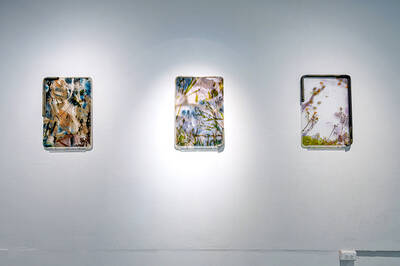
Located down a sideroad in old Wanhua District (萬華區), Waley Art (水谷藝術) has an established reputation for curating some of the more provocative indie art exhibitions in Taipei. And this month is no exception. Beyond the innocuous facade of a shophouse, the full three stories of the gallery space (including the basement) have been taken over by photographs, installation videos and abstract images courtesy of two creatives who hail from the opposite ends of the earth, Taiwan’s Hsu Yi-ting (許懿婷) and Germany’s Benjamin Janzen. “In 2019, I had an art residency in Europe,” Hsu says. “I met Benjamin in the lobby